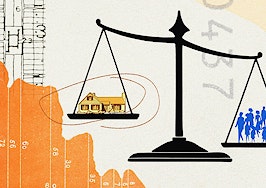- Zillow reported the national median rent at $1,405 in August, growing 1.7 percent annually.
- Over the past year, Seattle saw a 9.7 percent hike in rent.
- Rent growth in Houston nearly halted last year, but Zillow predicts it will pick up in 2017.
With recent migrations to tech centers like San Jose, Portland, Seattle and San Francisco comes the severe impact of housing demand and supply. Rent in these hot markets, among others, has exploded over the past five years as more millennial techies seek out jobs with bean bag chairs in the conference room.
As a result, rents continue to go up and people continue to move in. A new Zillow report shows that although some rent growth is expected on the east coast, the west coast still dominates.
West side is the best side – for jobs
“We have more renters today than in the past and most newly formed households are renter households. This taken together with a lack of new rental construction at less expensive price points has been a recipe for rising rents,” Dr. Svenja Gudell, chief economist at Zillow, said in a press release.
Seattle and Portland sit at the top of the list for annual rent growth in August. Over the past year, Seattle saw a 9.7 percent hike in rent while Portland experienced 7.4 percent growth – the top markets Zillow examined. In the next year, though, Seattle’s annual growth is expected to drop to 7.2 percent, and Portland’s predicted increase is down to 6 percent.
Zillow’s Rent Index (ZRI) shows median rent in Seattle to be $2,067 per month in August, so if forecasted properly, that will go up to around $2,215 by August 2017.
Zillow’s national ZRI was $1,405 in August, growing 1.7 percent annually. The report predicts the national median rent to see the same growth through the next year.
Local markets are seeing growth
Rent growth in New York City enjoyed 2.5 percent growth year-over-year in August, with a ZRI of $2,399. Zillow’s report forecasts 3.2 percent rent growth in the next year for the Big Apple metro.
In August, median rent in Los Angeles was $2,593 and $3,406 in San Francisco, and both metros rank in the top ten for highest projected rent growth percentage through the next year. San Francisco is forecasted to rise 4.9 percent in the next year, while L.A. trails close behind, at 4.8 percent.
Although Hurricane Matthew may affect some rental properties in Florida, Zillow predicts rent growth in the Miami metro to increase 3.2 percent through the next year. This is slightly less than the year before (out of 35 markets, Zillow reports, only 11 showed less growth than the previous year), when growth was 4.2 percent. Miami’s ZRI was $1,885 in August.
Houston’s rent growth nearly slowed to a halt over the past year, the report shows, increasing just 0.5 percent to a ZRI of $1,576 in August. But Zillow forecasts 1.6 percent growth through August 2017, which is triple that of the previous year.
Zillow predicts Washington D.C.’s median rent to increase 1.1 percent by August 2017, but that more than doubles the 0.5 percent annual growth it saw in August of this year. D.C.’s ZRI was $2,121 in August.
Baltimore’s median rent was $1,731 in August, growing 0.6 percent annually. The metro’s ZRI is expected to increase 1.6 percent by August 2017.
Median rent in Chicago was $1,643 in August. The Chicago metro was the only market out of 35 examined that saw rent decline over the past year, according to the report. Zillow reports a 0.2 percent decrease since 2015 – but forecasts 0.9 percent growth into the coming year.














